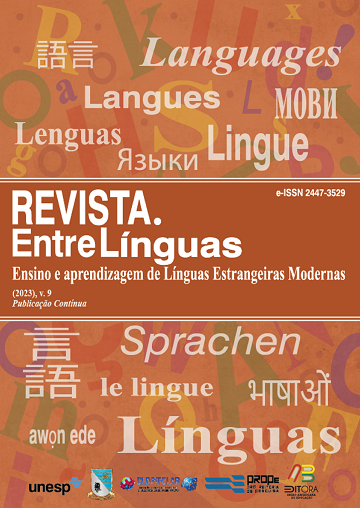Interactions of language and mathematics
Cesaro – like summation for certain divergent series
DOI:
https://doi.org/10.29051/el.v9i00.17895Keywords:
Language, Mathematics, Eulerian polynomials, Recurrence relation, Cesaro – like summationAbstract
Mathematics has its special language including grammar and symbols shared by Mathematicians universally, regardless of their mother tongue. Since mathematics is the same all across the globe, math can serve as a global language. The idea of assigning certain specific finite values to given divergent series is called Cesaro Summation. This paper attempts to analyze the interaction between mathematics and language, considering Cesaro – like summation for certain divergent series. To meet that aim, Eulerian polynomials are utilized. Also, a novel method of determining Cesaro – Like summation values by integrating particular generating functions is defined over the closed and bounded intervals for a general infinite power series whose coefficients are mth powers of natural numbers. The answers obtained provide new insights into understanding the Cesaro – Like summation process and offer a great deal of generalization and also reveal the mysterious interaction of mathematics and language.
Downloads
References
BLUMS, A. et al. Building links between early socioeconomic status, cognitive ability, and math and science achievement. Journal of Cognition and Development, v. 18, n. 1, p. 16-40, 2017.
GENLOTT, A. A.; GRÖNLUND, Å. Closing the gaps–Improving literacy and mathematics by ict-enhanced collaboration. Computers & Education, n. 99, p. 68-80, 2016.
HOFMANN, R.; MERCER, N. Teacher interventions in small group work in secondary mathematics and science lessons. Language and education, v. 30, n. 5, p. 400-416, 2016.
LEHRL, S. et al. Long-term and domain-specific relations between the early years home learning environment and students’ academic outcomes in secondary school. School Effectiveness and School Improvement, v. 31, n. 1, p. 102-124, 2020.
LEYVA, D. et al. Teacher–child interactions in Chile and their associations with prekindergarten outcomes. Child development, v. 86, n. 3, p. 781-799, 2015.
MARTIN, D. P.; RIMM-KAUFMAN, S. E. Do student self-efficacy and teacher-student interaction quality contribute to emotional and social engagement in fifth grade math?. Journal of school psychology, v. 53, n. 5, p. 359-373, 2015.
PENG, P. et al. Examining the mutual relations between language and mathematics: A meta-analysis. Psychological Bulletin, v. 146, n. 7, p. 595, 2020.
PURPURA, D. J.; REID, E. E. Mathematics and language: Individual and group differences in mathematical language skills in young children. Early Childhood Research Quarterly, v. 36, p. 259-268, 2016.
REDISH, E. F.; KUO, E. Language of physics, language of math: Disciplinary culture and dynamic epistemology. Science & Education, v. 24, n. 5, p. 561-590, 2015.
RIMM-KAUFMAN, S. E. et al. To what extent do teacher–student interaction quality and student gender contribute to fifth graders’ engagement in mathematics learning?. Journal of Educational Psychology, v. 107, n. 1, p. 170, 2015.
ULATOWSKI, F. et al. Recognizing the limited applicability of Job plots in studying host–guest interactions in supramolecular chemistry. The Journal of organic chemistry, v. 81, n. 5, p. 1746-1756, 2016.
Published
How to Cite
Issue
Section
License

This work is licensed under a Creative Commons Attribution-NonCommercial-ShareAlike 4.0 International License.
Os manuscritos aceitos e publicados são de propriedade da Revista EntreLínguas. Os artigos publicados e as referências citadas na Revista EntreLínguas são de inteira responsabilidade de seus autores.
Transferência de direitos autorais – autorização para publicação
Caso o artigo submetido seja aprovado para publicação, já fica acordado que o(s) autor(es) autoriza(m) a UNESP a reproduzi-lo e publicá-lo na EntreLínguas, entendendo-se os termos “reprodução” e “publicação” conforme definição respectivamente dos incisos VI e I do artigo 5° da Lei 9610/98. O artigo poderá ser acessado pela rede mundial de computadores (Internet), sendo permitidas, a título gratuito, a consulta e a reprodução de exemplar do artigo para uso próprio de quem a consulta, desde que haja a citação ao texto consultado. Essa autorização de publicação 328 EntreLínguas, Araraquara, v. 1, n .2, p. 323-328, jul./dez. 2015 não tem limitação de tempo, ficando a UNESP responsável pela manutenção da identificação do(s) autor(es) do artigo. Os artigos publicados e as referências citadas na Revista EntreLínguas são de inteira responsabilidade de seus autores.











